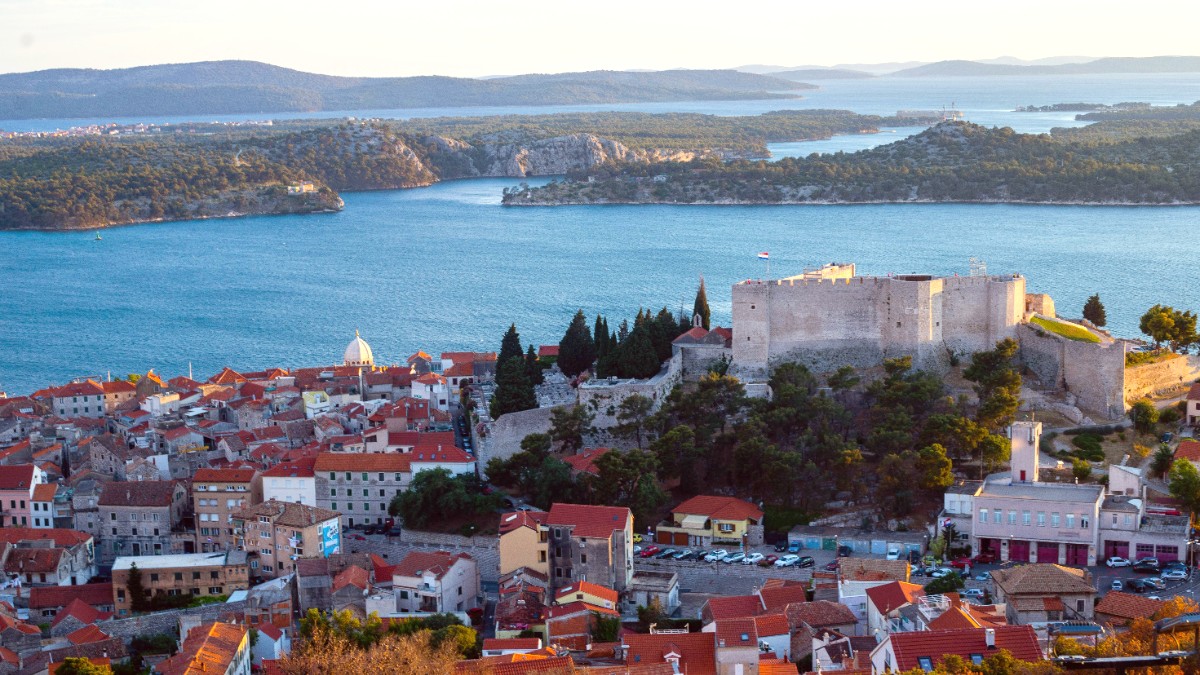
Croatia
Šibenik has a Mediterranean climate (Csa), with hot, dry summers and mild, wet winters.
Days are long and sunny in summer, ideal for beach activities and outdoor exploration. Precipitation is minimal in summer.
Autumn (September - November): Temperatures gradually cool. September averages 18-25°C (64-77°F). Precipitation increases, specifically in October and November. Sea temperatures remain pleasant in September.
Winter (December - February): The mildest season, with average daily temperatures between 5-12°C (41-54°F). Winter is the wettest season. Snowfall is rare. Spring (March - May): Temperatures rise steadily, from 10°C in March to 20°C (50-68°F) by late May. Rainfall decreases. Sea temperatures begin to warm, reaching 18-20°C (64-68°F) by late May.
Peak Period
Warmest weather, ideal for swimming and water activities. All attractions, restaurants, and services operate at full capacity.
Largest crowds at popular sites. Accommodation and flight prices are at their highest.
Transition Period
Pleasant temperatures, warm enough for swimming. Fewer crowds than in peak season. Accommodation prices are lower.
Some rain, especially later in autumn. Sea might feel cooler in early May or late October. Some seasonal businesses may not operate.
Off-Peak Period
Lowest prices for accommodation and flights. Few tourists, offering local life experiences. Clear and sunny days can occur.
Many tourist businesses are closed or have reduced hours. Sea is too cold for swimming. Higher chance of rain.
This strong, cold, dry, and often gusty northerly to northeasterly wind appears suddenly. It brings sharp temperature drops and can impact ferry services, notably in winter.
A warm, humid, southeasterly wind, Jugo brings clouds and rain. This wind is common in autumn and winter.
June to September for warm sea temperatures.
May, June, September, and early October for pleasant temperatures.
April, May, early June, September, and October for comfortable temperatures.
May to early October. Sea is calm and temperatures are good.
Mainly occur in July (e.g., Šibenik Dance Festival, International Children's Festival).
Croatia is part of the Schengen Area, which simplifies travel for many nationalities.
Croatia joined the Schengen Area on January 1, 2023. Non-EU/EEA citizens generally need a Schengen visa for stays up to 90 days if their nationality is not visa-exempt.
Prepare the following documents for entry into Croatia and the Schengen area.
Prices for your trip can vary significantly based on your travel style and the season. Croatia adopted the Euro (€) on January 1, 2023.
Cook your own meals by staying in accommodations with kitchenettes and buying groceries from local supermarkets.
Utilize the affordable local bus system for longer distances. Purchase combined tickets for fortresses for small savings.
Croatia is a generally safe country, but it always helps to be prepared.
No specific vaccinations for entry from most countries.
Ensure MMR, Diphtheria, Tetanus, Pertussis, Varicella, Polio, and yearly flu shot are up to date.
Consider Hepatitis A and B. Rabies for high-risk activities. Consult a travel health clinic or your doctor.
Prevention Strategies
Sunburn and Heatstroke: Use high-SPF Sunscreen, wear a hat, seek shade, stay hydrated.
Dehydration: Drink plenty of water. Carry a reusable water bottle. Mosquito Bites: Use Insect repellent, especially at dusk. Sea Urchins: Wear Water shoes for protection. Food and Waterborne Illnesses: Tap water is safe. Practice standard food hygiene.
DEET-based insect repellent (link)
Croatia has a public healthcare system. EU/EEA citizens with EHIC cards access state-provided healthcare like Croatian nationals.
Should have comprehensive travel insurance. Payment is typically upfront. Keep receipts for insurance claims.
Opća bolnica Šibenik is the main hospital. Pharmacies (Ljekarna) are widely available, many pharmacists speak English.
Šibenik is generally considered a very safe city with a low crime rate. Petty theft can occur in crowded tourist areas.
Practice general caution, keep an eye on belongings, and avoid leaving valuables unattended. No specific neighborhoods have high crime rates.
Petty theft like pickpocketing can occur in crowded tourist areas.
Minor tremors can occur (seismic zone). Wildfires pose a risk in dry summer months.
Highly recommended for medical emergencies, evacuation, and lost luggage.